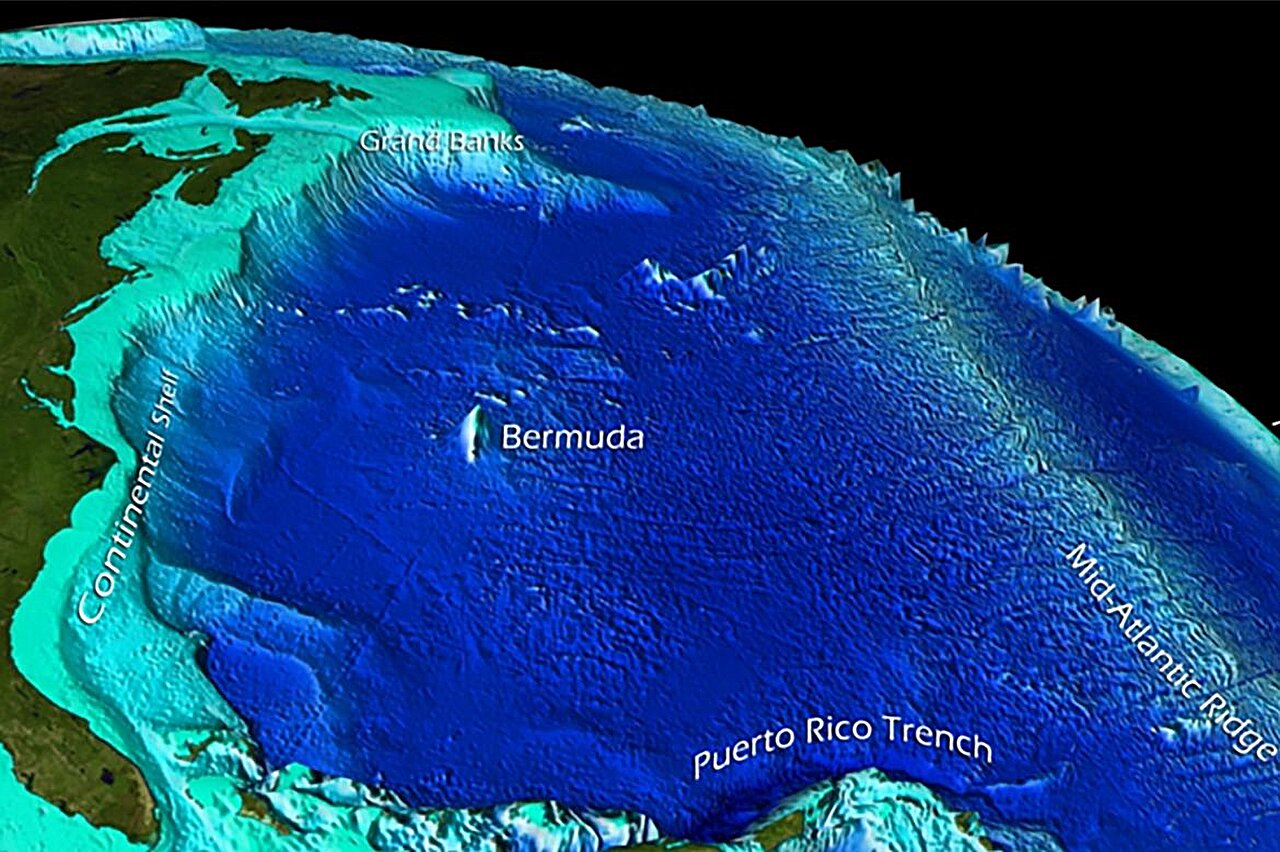Graphical representation of satellite-recorded bathymetric data of the Western Atlantic Ocean Basin and its ocean floor features. Credit: NOAA’s National Environmental Satellite and Information Service
× close to
Graphical representation of satellite-recorded bathymetric data of the Western Atlantic Ocean Basin and its ocean floor features. Credit: NOAA’s National Environmental Satellite and Information Service
The movement of carbon between the atmosphere, oceans and continents – the carbon cycle – is a fundamental process that regulates Earth’s climate. Some factors, such as volcanic eruptions or human activities, release carbon dioxide into the atmosphere. Others, such as forests and oceans, absorb that CO2. The right amount of CO in a well-controlled system2 is emitted and absorbed to maintain a healthy environment. Carbon sequestration is a tactic in the current fight against climate change.
A new study finds that the shape and depth of the ocean floor explain up to 50% of the changes in the depth at which carbon has been sequestered in the ocean over the past 80 million years. Previously, these changes were attributed to other causes. Scientists have long known that the ocean, the largest absorber of carbon on Earth, directly controls the amount of carbon dioxide in the atmosphere. But until now, it wasn’t well understood how exactly changes in seafloor topography over Earth’s history affect the ocean’s ability to sequester carbon.
The work has been published in the magazine Proceedings of the National Academy of Sciences.
“We have been able to demonstrate for the first time that the shape and depth of the ocean floor play an important role in the long-term carbon cycle,” said Matthew Bogumil, lead author of the paper and PhD candidate at UCLA in the field of Earth, Planetary. and space sciences.
The long-term carbon cycle consists of many moving parts, all functioning on different time scales. One of those components is seafloor bathymetry: the average depth and shape of the ocean floor. This in turn is determined by the relative positions of the continent and oceans, sea level and currents within the Earth’s mantle. Carbon cycle models calibrated with paleoclimate datasets provide the foundation for scientists’ understanding of the global marine carbon cycle and how it responds to natural perturbations.
“Typically, carbon cycle models of Earth’s history consider seafloor bathymetry as a fixed or secondary factor,” said Tushar Mittal, co-author of the paper and professor of geosciences at Pennsylvania State University.
The new research reconstructed the bathymetry of the past 80 million years and fed the data into a computer model that measures carbon sequestration in the sea. The results showed that ocean alkalinity, calcite saturation state and carbonate compensation depth were strongly dependent on changes in shallow parts of the ocean floor (about 600 meters or less) and on how deeper marine areas (greater than 1,000 meters) are distributed. These three measures are critical to understanding how carbon is stored in the ocean floor.
Graphical representation of various features of the ocean floor on a scale of 0 to 35,000 feet below sea level. Credit: NOAA Office of Education
× close to
Graphical representation of various features of the ocean floor on a scale of 0 to 35,000 feet below sea level. Credit: NOAA Office of Education
The researchers also found that for the current geological epoch, the Cenozoic, bathymetry alone accounted for 33%-50% of the observed variation in carbon sequestration and concluded that by ignoring bathymetric changes, researchers are incorrectly attributing changes in carbon sequestration to other, less certain factors. , such as atmospheric CO2the temperature of the water column and silicates and carbonates washed into the ocean by rivers.
“Understanding key processes in the long-term carbon cycle can better inform scientists working on marine carbon dioxide removal technologies to combat climate change today,” Bogumil said. “By studying what nature has done in the past, we can learn more about the possible outcomes and usefulness of marine storage to mitigate climate change.”
This new insight that the shape and depth of the ocean floor may have the greatest influence on carbon sequestration could also aid the search for habitable planets in our universe.
“When we look at distant planets, we currently have a limited number of tools to give us an idea of their potential for habitability,” said co-author Carolina Lithgow-Bertelloni, professor at UCLA and department chair of Earth, Planetary and Space Sciences . “Now that we understand the important role that bathymetry plays in the carbon cycle, we can directly connect the planet’s internal evolution to the surface environment as we draw conclusions from JWST observations and understand the planet’s habitability in general.”
The breakthrough represents just the beginning of the researchers’ work.
‘Now that we know how important bathymetry in general is, we plan to use new simulations and models to better understand how differently shaped ocean floors will specifically affect the carbon cycle and how this has changed throughout Earth’s history, especially early earth, when most of the land was under water,” Bogumil said.
More information:
Matthew Bogumil et al., The effects of bathymetry on the long-term carbon cycle and CCD, Proceedings of the National Academy of Sciences (2024). DOI: 10.1073/pnas.2400232121
Magazine information:
Proceedings of the National Academy of Sciences
